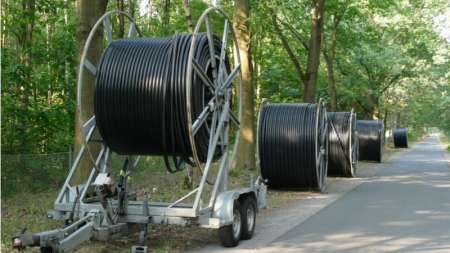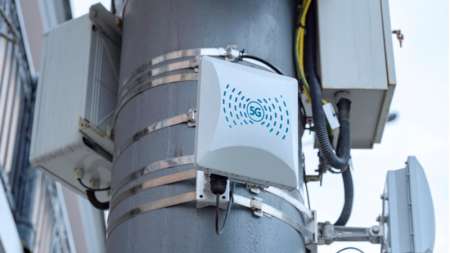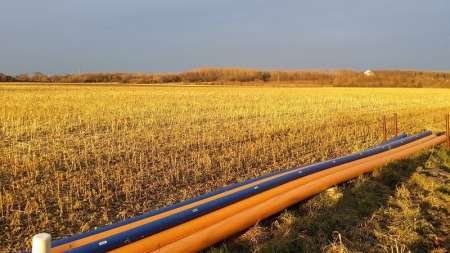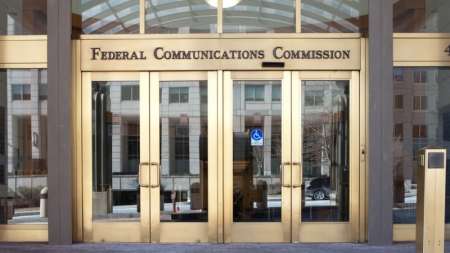The Federal Communications Commission’s (FCC) Affordable Connectivity Program (ACP) – which has helped 23 million Americans receive subsidized broadband service and connected devices – is running out of money, but bipartisan legislation introduced in both the House and Senate this week aims to revive the program with $7 billion of fresh funding. […]
Although the Federal government has numerous programs in place to provide financial support to aid the deployment of high-speed broadband to unserved areas, industry experts told members of Congress on Thursday that they’re not getting the “biggest bang for the buck.” […]
Ahead of its second round of funding for tribal access to broadband internet services, the Government Accountability Office (GAO) is urging the National Telecommunications and Information Administration (NTIA) to provide better feedback to applicants who were denied full project funding in the Tribal Broadband Connectivity Program’s first application round. […]
The Federal Communications Commission’s (FCC) Affordable Connectivity Program (ACP) is likely to run out of its current funding sources by mid-2024 – potentially ending the flow of money to pay for affordable broadband connectivity and devices for the more than 17 million Americans that have benefited from the program. […]
The Federal Communications Commission (FCC) will release an updated Broadband Funding Map in June to improve existing inaccuracies, according to National Telecommunications and Information Administration (NTIA) Administrator Alan Davidson. […]
The Federal Communications Commission on May 15 published the agency’s Broadband Funding Map which shows where the Federal government is providing financial support for broadband infrastructure development projects across the country. […]
The Federal Communications Commission (FCC) announced a series of enhancements to online consumer application system for the Affordable Connectivity Program (ACP). The FCC said the enhancements will make it easier for eligible consumers to apply and enroll in the program. […]
The National Telecommunications and Information Administration (NTIA) said on March 1 that it is seeking input on how to structure $2.7 billion in broadband grant programs to “ensure everyone in America has the digital skills and devices they need to realize the full potential of high-speed internet access.” […]
The Federal Communications Commission (FCC) – in the midst of an ongoing revamp of how it builds and updates its national broadband maps – is in the process of gathering crowdsourced data from the public and considering how to use it to improve the mapping process. […]
The Federal Communications Commission (FCC) has plenty of room to improve its Affordable Connectivity Program (ACP) – which offers discounted broadband services to eligible households – by strengthening its goals and measures, consumer outreach, and fraud-risk management, according to a new Government Accountability Office (GAO) report. […]
A new report today from the Government Accountability Office (GAO) is calling on the National Telecommunications and Information Administration (NTIA) to develop comprehensive performance goals and measures, as well as a fraud risk assessment, for two new broadband programs that are pumping out billions of broadband funding nationwide. […]
The National Telecommunications and Information Administration (NTIA) will be focused on funding broadband programs, developing a national spectrum policy, and protecting privacy rights for marginalized groups in 2023. […]
The U.S. Department of the Treasury announced the approval of broadband projects to an additional six states under the American Rescue Plan’s (ARP) Capital Projects Fund (CPF), which makes funding available for reliable, affordable broadband infrastructure. […]
The Federal Communications Commission (FCC) announced it has committed another $183 million in funding through its Emergency Connectivity Program to help close the “homework gap” by providing digital services for students nationwide. […]
A new survey from Verizon Frontline finds that network reliability tops the list of communications requirements for first responders when they are responding to emergencies. […]
A Pentagon expert involved in implementing fifth-generation (5G) wireless technologies for the military explained some of the standards-setting and cybersecurity challenges surrounding the technology during an address at the Billington Cybersecurity Summit on September 8. […]
The National Telecommunications and Information Administration (NTIA) on August 30 announced $105 million of grant funding to five Tribal communities in Arizona to expand the availability of broadband services. […]
Government and private sector experts offered different and sometimes conflicting views on how quickly to implement new applications and vendors into fifth-generation (5G) wireless communications supply chains during an August 30 event organized by ATARC and the Federal Mobility Group (FMG) Community of Practice chartered by the Federal Chief Information Officers Council. […]
The Department of Commerce’s National Telecommunications and Information Administration (NTIA) announced $143.6 million in funds awarded from the Internet for All Initiative’s Tribal Broadband Connectivity Program (TBCP) to Tribes in California and Washington. […]
The National Telecommunications and Information Administration (NTIA) said on August 17 that all 50 states, along with the District of Columbia and all U.S. territories, have filed applications for initial planning funds under the government’s Broadband Equity, Access, and Deployment (BEAD) Program that aims to distribute $42.4 billion of broadband-related grants to underserved or unserved communities. […]
Legislation recently introduced in the Senate aims to create a Federal grant system to help fund the construction of new broadband networks in parts of the country that either don’t have much broadband service currently available or that have service speeds of less than 100 megabits per second (Mbps) upload and 20 Mbps download. […]
The Federal Communications Commission (FCC) has launched the “Your Home, Your Internet” pilot program designed to raise awareness of the Affordable Connectivity Program (ACP) among households receiving Federal housing assistance. […]
Reps. Tim Walberg, R-Mich., and Peter Welch, D-Vt., have joined with Sens. Roger Wicker, R-Miss., and Ben Ray Luján, D-N.M., to introduce the Proper Leadership to Align Networks (PLAN) for Broadband Act, which calls on President Biden to develop a national broadband strategy. […]
The Federal Communications Commission (FCC) on July 27 committed an additional $77 million in two new funding rounds through the Emergency Connectivity Program (ECF) that aims to help close the “homework gap” for students across the United States. […]
While the Biden administration is pushing hard to increase broadband service access across the country, the White House needs to come up with a national strategy to do so on tribal lands where broadband access has traditionally lagged, the Government Accountability Office (GAO) said in a new report. […]
The Federal Communications Commission (FCC) Broadband Data Task Force announced that fixed and mobile broadband providers in the Broadband Data Collection (BDC) may obtain early access to certain portions of the system to enter identifiable information in advance of the broadband availability data filing window on June 30. […]
States have a big opportunity to provide internet service to millions of unconnected citizens people with billions in broadband funding provided by Congress in bipartisan infrastructure legislation, but states have a lot of work to do to make the most of the funds, according to a McKinsey & Co. report released on June 7. […]
The Department of the Treasury said it approved about $631 million of funding to four states from the Coronavirus Capital Projects Fund (CPF), which will provide money for affordable broadband infrastructure and other digital connectivity technology projects. […]
Before the Federal government flows new broadband support funding out to unserved and underserved areas of the U.S., it must know where the service is robust and where it’s not. […]
Amid an overwhelming and fragmented amount of broadband programs, the Government Accountability Office (GAO) is calling for a unified national broadband strategy. […]














